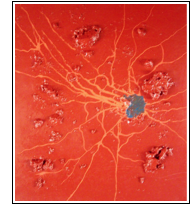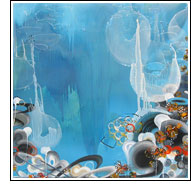Le point sur l'éducation des bébés
Depuis quelque temps, il y a une forte tendance à commencer l’éducation des bambins dès le berceau. L’Angleterre songe même à instituer un programme national dès la naissance (BBC : Mixed response to toddler plans). La course aux génies à engendrer toute une industrie de jouets, d’émissions télévisées et de cédéroms éducatifs destinés à développer les jeunes cerveaux. Mais ceux-ci sont-ils efficaces ? La science commence maintenant à trouver des réponses à ces questions.
Dans un fameux dossier sur le cerveau, la magazine Time fait le point sur ce que les scientifiques savent du développement du cerveau des jeunes enfants (Time : Want a Brainier Baby?). Les faits saillants :
In a 2004 Kaiser Family Foundation study, more than half of the parents surveyed said that educational videos and toys are « very important to children’s intellectual development. » [...] According to Vicky Rideout, vice president of the Kaiser foundation, in 2003 there were 140 videos or DVDs for kids age 2 and younger for sale on Amazon. Today, there are 750.
According to Dimitri Christakis, codirector of the Child Health Institute at the University of Washington, « The more TV babies watch, the more likely they are to have attentional problems later in life. » Christakis cites a long-term study that tracked children from age 1 through age 7. It found that for each additional hour of daily TV viewing before age 3, a child’s chances of later developing problems paying attention increased 10%.
The human mindespecially the mind of a babyis driven by what Ivan Pavlov (of the famous dog) called the orienting reflex. When a baby is confronted with a novel sight or sound, he or she can’t help focusing on it. By rapidly changing colors, sounds and motions, videos for children effectively force a baby’s brain to stay at attention. If his or her gaze wanders, the action quickly rivets it back to the screen. « Parents say, ‘My child can’t stop looking at it! She loves it!’ » Christakis says. « Well, true, she can’t stop looking at it, but that doesn’t mean she loves it. »
The American Academy of Pediatrics recommends no TV viewing of any kind before age 2.
CDs and DVDs designed to teach a baby Spanish or Chinese are also problematic. Patricia Kuhl, who studies language acquisition at the University of Washington, conducted an experiment comparing the effects of Chinese audio recordings for children and a Chinese-speaking human. She had a native Mandarin speaker play with a group of babies while speaking Chinese for 12 sessions of 25 minutes each over a four-week period. Later she tested the babies and was able to demonstrate that they recognized Mandarin sounds. But when she repeated the experiment with three control groupsone set of babies that saw the Chinese speaker play with babies on video, another that listened to an audio recording of the Chinese woman playing and a third that had no exposure to the Chinese speakernone seem to perceive Mandarin sounds. Apparently, the presence of a living, breathing human was essential.
Most experts agree that what matters most is not what toy the baby plays with but the ways in which you interact with your child. [...] Babies prefer humans over anything inanimate.
One key difference between human interaction and even the most sophisticated educational toy is that interpersonal exchanges engage all the sensessight, sound, smell, taste and, very important, touch.
The more parents respond to babies’ cries, expressions and articulations, the earlier the children will talk and the more advanced their language skills will be at age 5. Parents who respond to babies’ cuesreacting to grimaces and giggles, mimicking their sounds, extrapolating from « bababa » to « bottle, » labeling things they touchhelp their children acquire language. This responsiveness, however, should not be forced.
Babies are remarkably attuned to emotions. The bestand easiestgift a parent can give his or her child is relaxed time when the parent is focused on the baby and follows the baby’s lead.
Vous pouvez suivre les commentaires en réponse à ce billet avec le RSS 2.0 Vous pouvez laisser une réponse, ou trackback.








